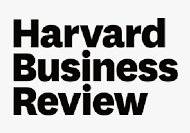The Pandemic Pushed Universities Online. The Change Was Long Overdue.

Harvard Business Review
Sean Gallagher and Jason Palmer
September 29, 2020
Higher education is being pummeled by the Covid-19 pandemic. This spring’s campus shutdowns led to a quick rush to “remote learning,” exposing the fragmented adoption of high-quality education technology and digital capabilities across thousands of colleges and universities. The tumultuous fall semester, complete with aborted campus openings and widely diverging online and blended options, has only increased the pressure on America’s colleges and universities.
Pre-pandemic, there was already widespread acknowledgement that the traditional higher education business model is seriously challenged. Fall 2020 marks a clear inflection point as students, educators, and government leaders alike scrutinize the price and value proposition of higher education through the new lens of traditional classroom versus multiple modes of digital delivery.
A number of elite institutions — such as Princeton University, Williams College, Spelman College, and American University — have substantially discounted tuition for their fully online experience in an historically unprecedented fashion, highlighting pricing pressures and opening up Pandora’s box. This comes after a decade of growth in postsecondary alternatives, including “massively open online courses” (MOOCs), industry-driven certification programs, and coding bootcamps. This moment is likely to be remembered as a critical turning point between the “time before,” when analog on-campus degree-focused learning was the default, to the “time after,” when digital, online, career-focused learning became the fulcrum of competition between institutions.







